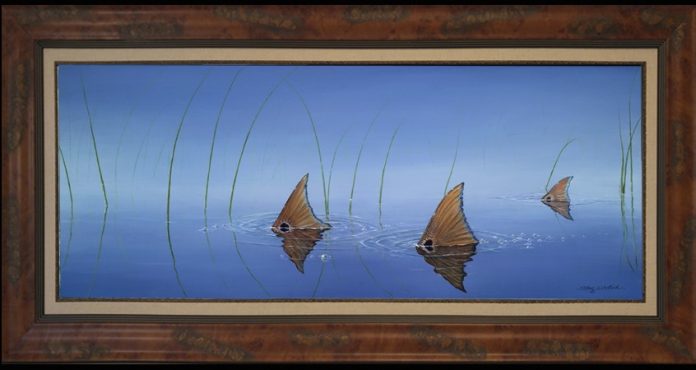It is blazing hot outside. The water is as hot as it gets. The fish are there: Will they eat? The answer is sometimes yes, sometimes no. Reports will actually get better. The amount of baitfish will keep the opportunities sustained. But things will be a bit of a battle until the easier fishing of Fall, when water temperatures level out again. Stay in areas with deeper grass and sand with substantial current. Lures and baits kept down near the bottom will get eaten and with the heat of August, the slower you move it, the better your results.
A tropical system due in at the end of the weekend. A weaker storm, just how much rain is coming? How can there be a tropical storm but a 30% chance of rain?
The redfish game plan should be “sunup” or “sunset” on good tides. Their numbers, not what they once were. Consider looking deeper than you’d normally target them, in three feet of water instead of the “less than two feet” depth. For other species, the best results may shift anglers from the beach areas to the docklights and mangrove shorelines. Many fish will visit the troughs and beach swashes to feed but will also spread into other areas as the spawn concludes. “Beat the heat and find the maximum feed” by going at night. Closed: What will they be like in a couple of years? It will take that long.
Trout, better at night than other time periods, locations with strong current and baitfish schools have steady action the first couple hours after sunrise. The topwater bite has been pretty good. The floating grass has been fairly decent to work around. It is not the ideal time for targeting trout but they are here and they are more cooperative than most species. I still think the best time to find big trout eating is the middle of the night. Closed, their size has gradually increased but I’d have like to see that be even better. Part of the problem: All the people keeping them anyway. Poachers. Just plain poachers.
Black drum are still available on the bridge pilings of Tampa Bay. They are residents and they are large. We have caught 70-pound fish almost daily on the bridge trips. Pompano action still isn’t what it should be. Although we are catching a few in 2018 and 2017 it was July and August when we were catching pompano easily. The rig: The yellow Silly Willy with a pink teaser (with a small bit of white flash). Pompano are the best eating fish in the Gulf of Mexico. If you can find them: Enjoy them!
Flounder were good four months ago, now, what happened? It has been about five years. It would be nice to have that fishery back. So many things have changed.
Silver trout came back. You have to be in the right spot but my “year-round” silver spot is pretty good. Not big, they are just solid action if you go to the right spot. Smoked whole, they make a good fish spread. 20 pounds of fish spread in the fridge, silvers have been easy.
Action trips: Mackerel, ladyfish, jacks, snapper and speckled trout will be located around the baitfish schools in the deeper waters. Hovering birds tip off the location of feeding fish. Areas in upper Tampa Bay are flat our “easy” for ladyfish. They are in huge numbers and they are pretty big. Mackerel have been decent. Center bay, like the Skyway area, prime location to find them. Off the beaches in the right spot, you will get into them.
Days off: Launch improvements. For those who do Miguel Bay, you’re welcome. It is the best it has ever been. Spent three full days working on it. Everything: Grass and mud removal. Shell dumped. Garbage picked up. It is looking really good.
The Neil Blog publishes more often than these reports. If you want on the email list, let me know.
As always: Be careful out there!
Neil Taylor
Owner and guide: www.strikethreekayakfishing.com
(Cell) 727-692-6345 LivelyBaits@aol.com
Owner and site administrator: www.capmel.com
Poachers are common thieves. See a poacher, report a poacher!
If you suspect a wildlife or boating law violation, report it to the FWC’s Wildlife Alert Reward Program: 888-404-FWCC (3922).
Cell phone users can reach us at *FWC or #FWC, depending on your service provider.
Most cell phones allow users to send text messages directly to an email address. You can text Tip@MyFWC.com ; standard usage fees may apply.
Supply as much detailed information such as the location of the offender, the boat description, number of people on board, clothing, vehicle information and give the dispatcher your phone number. Do this discreetly. You do not want to have direct contact with these people.
- The Neil Blog… - July 26, 2023
- The Catfish - July 26, 2023
- update - July 22, 2023











